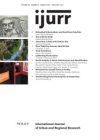Proclamations of the death of Los Angeles’ growth machine are premature. These proclamations overlook the growing role of immigrant Korean and Chinese entrepreneurs in regional property development. Since 1970, Korean and Chinese entrepreneurs have seriously restructured Los Angeles’ morphology, creating hierarchically arranged residential and business clusters for co–ethnic immigrants. Koreatown and Monterey Park are the brand names most familiar to outsiders, but these prominent localities really coexist with a multiplicity of less well–known ethnic communities that owe their origins to immigrant property developers. The immigrant property developers use the classic methods of the growth machine: buy land cheaply, promote it in Chinese or Korean emigration basins, then sell it to co–ethnic immigrants at a profit. In the process, the immigrant property developers reduce the difficulty of immigration to Los Angeles at the same time that they enhance its perceived desirability. The success of the Chinese and Korean developers highlights the hazard of assuming, as is conventionally done, that ethnic residential clustering arises from leaderless social processes. In both these highlighted cases, entrepreneurial elites created residential clusters of co–ethnics from conscious, long–term plans that required political as well as economic savoir–faire. In so doing, the immigrant property developers joined the Los Angeles growth machine whose fortunes, admittedly, have been waning among the native born population of the region.
Details
Written by:
Ivan Light
Digital Object Identifier (DOI)
10.1111/1468-2427.00376
About DOI
Read full article as PDF
Read full article as HTML
See the references for this article
